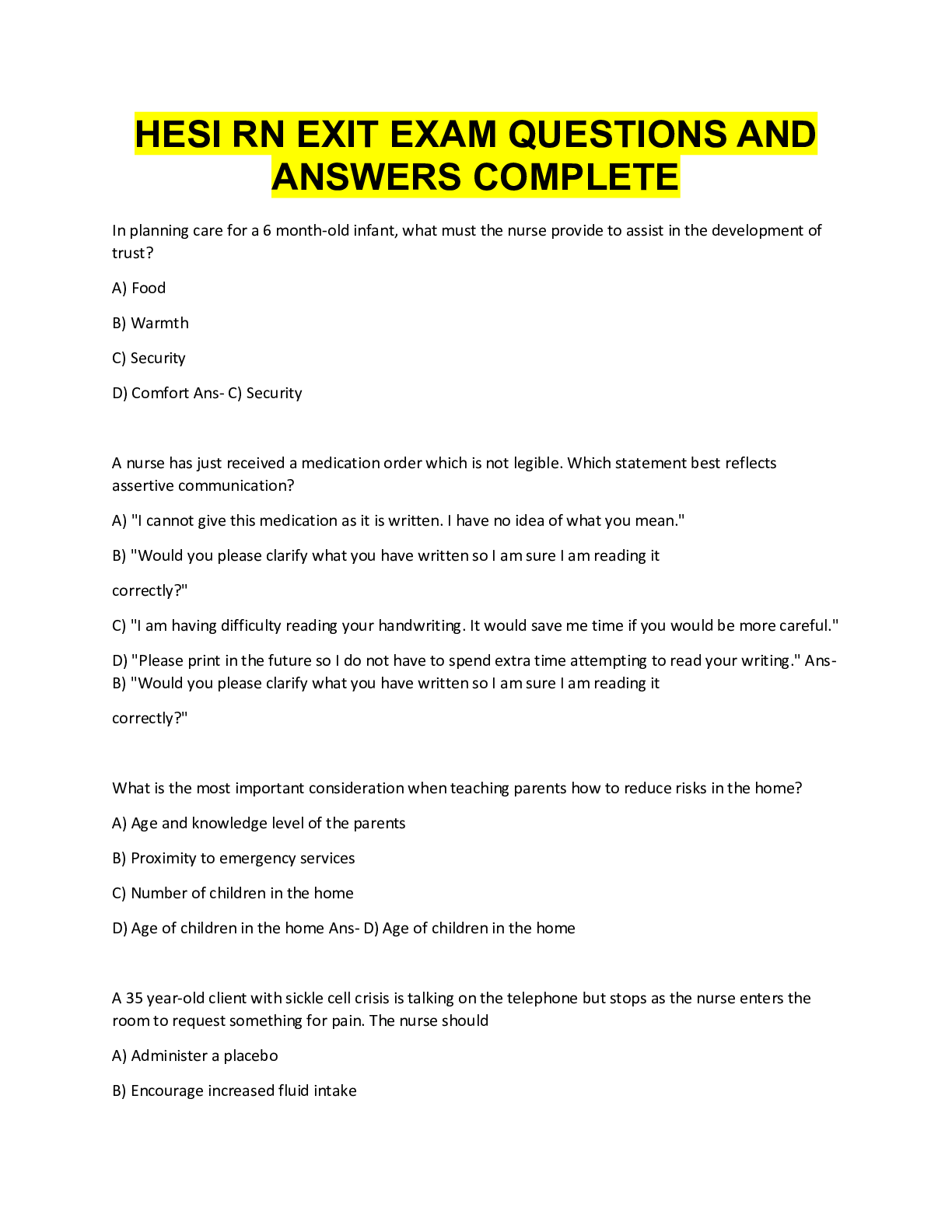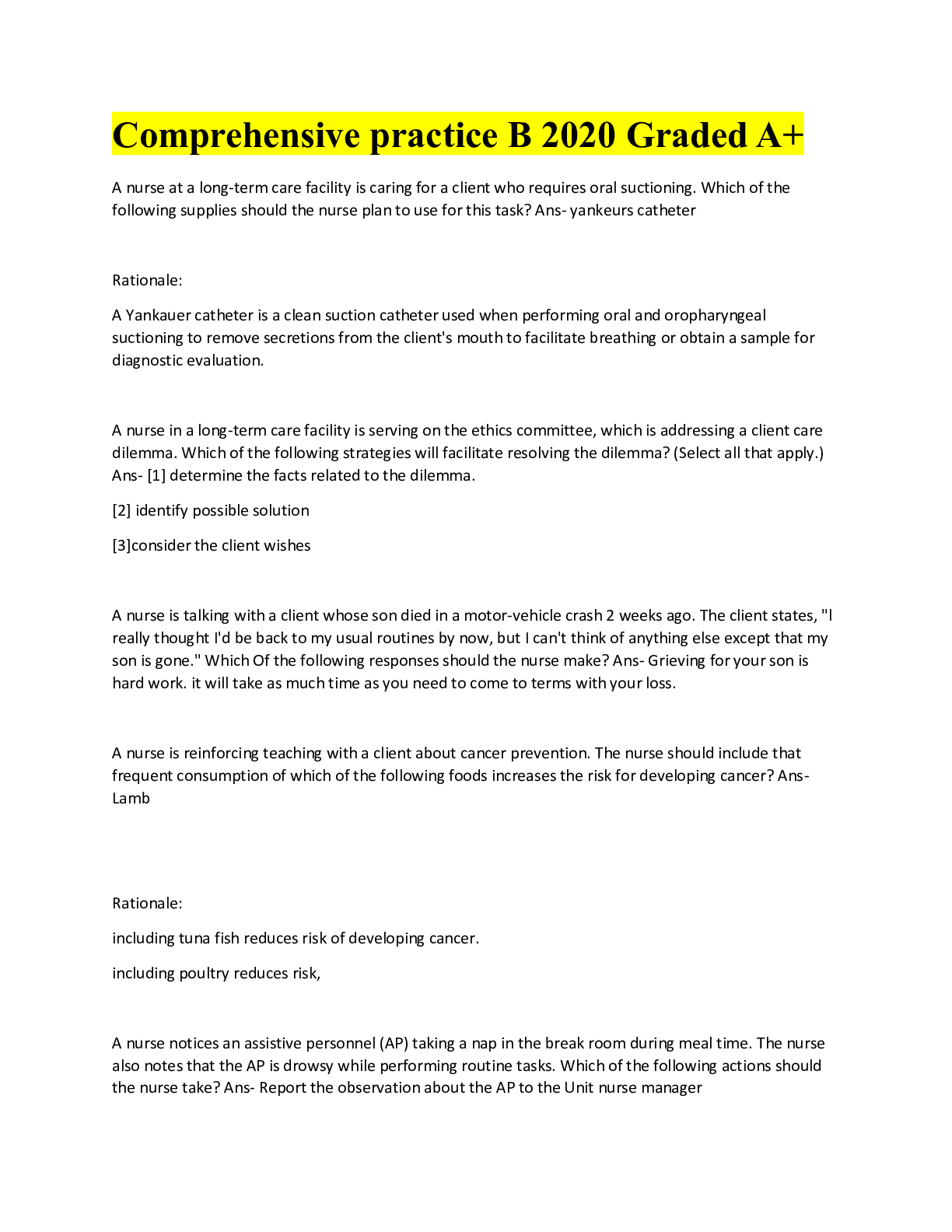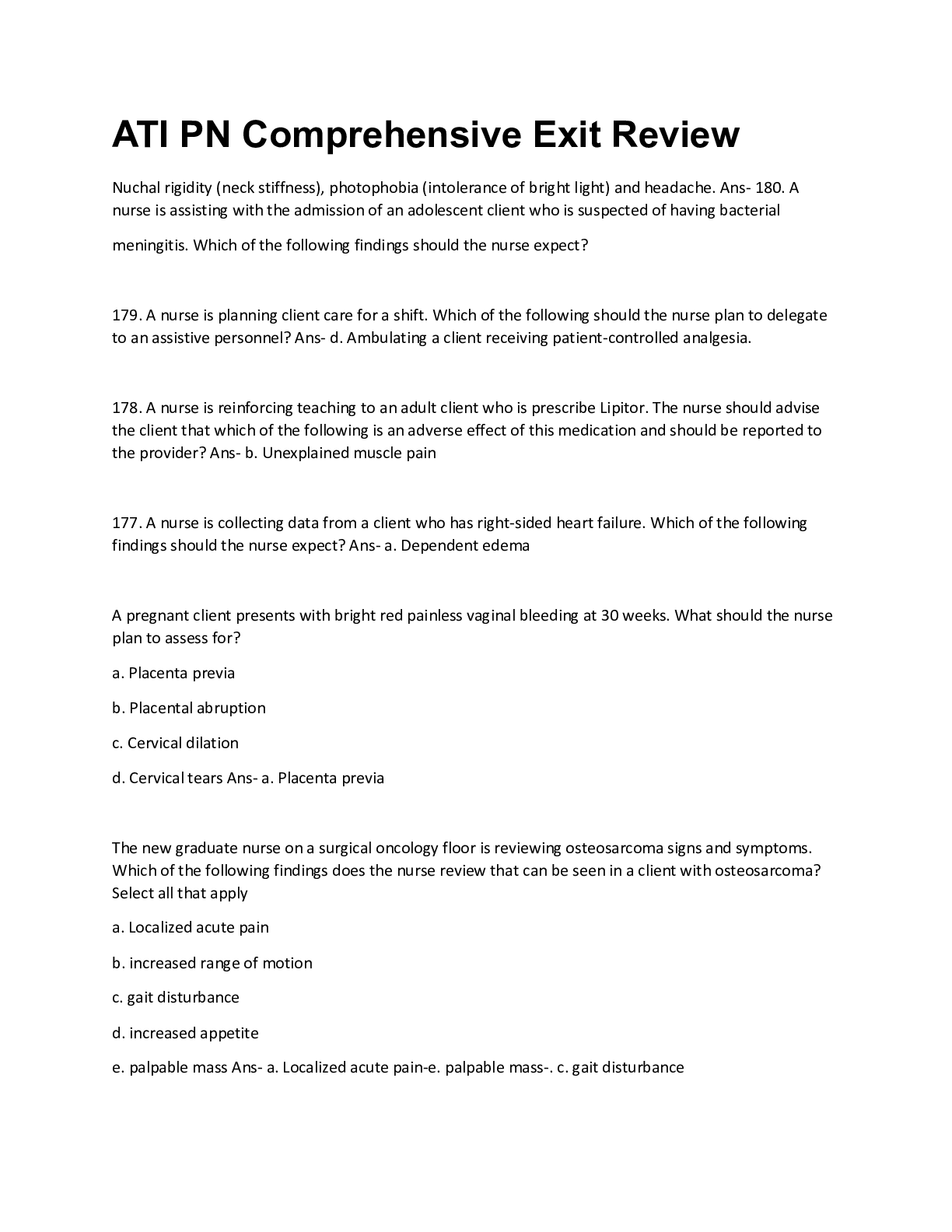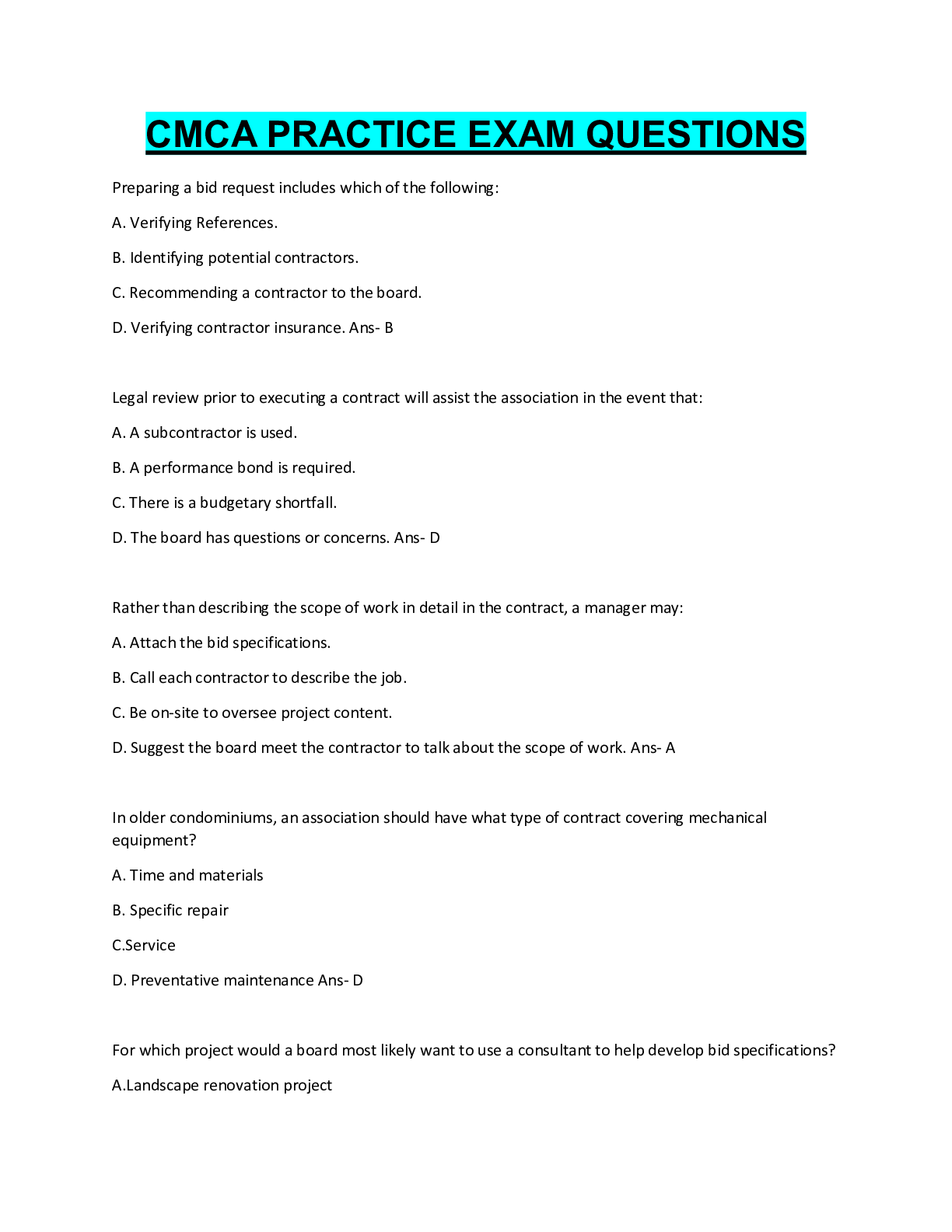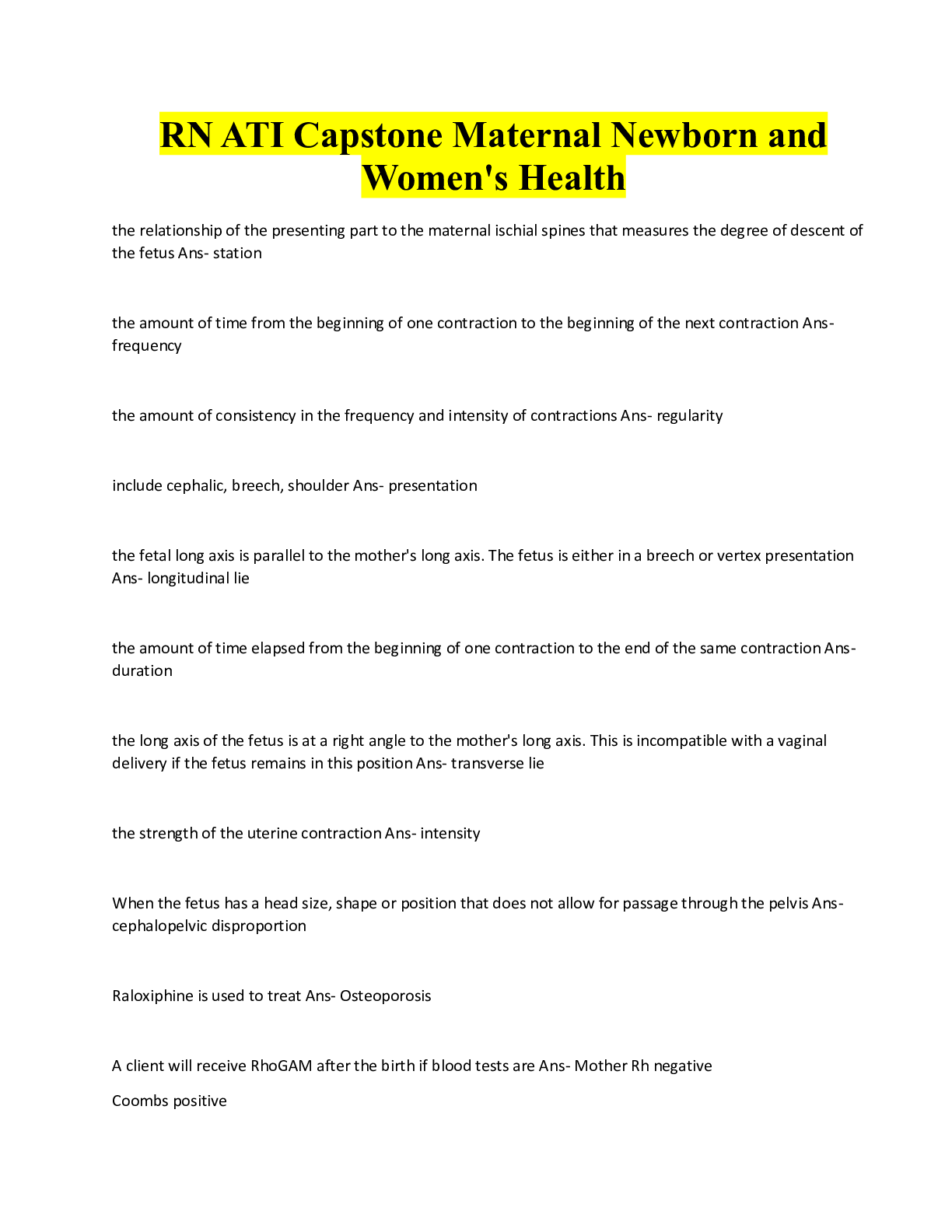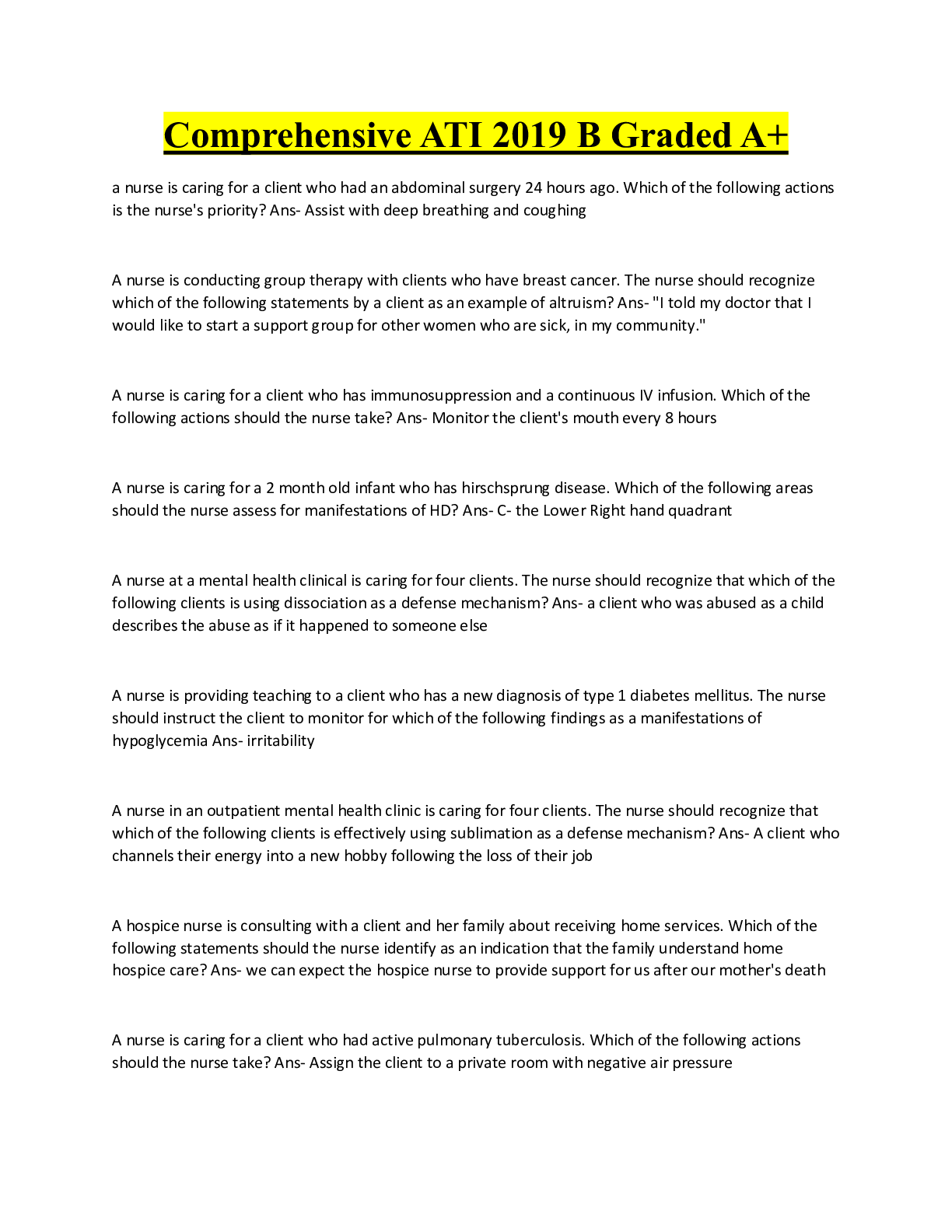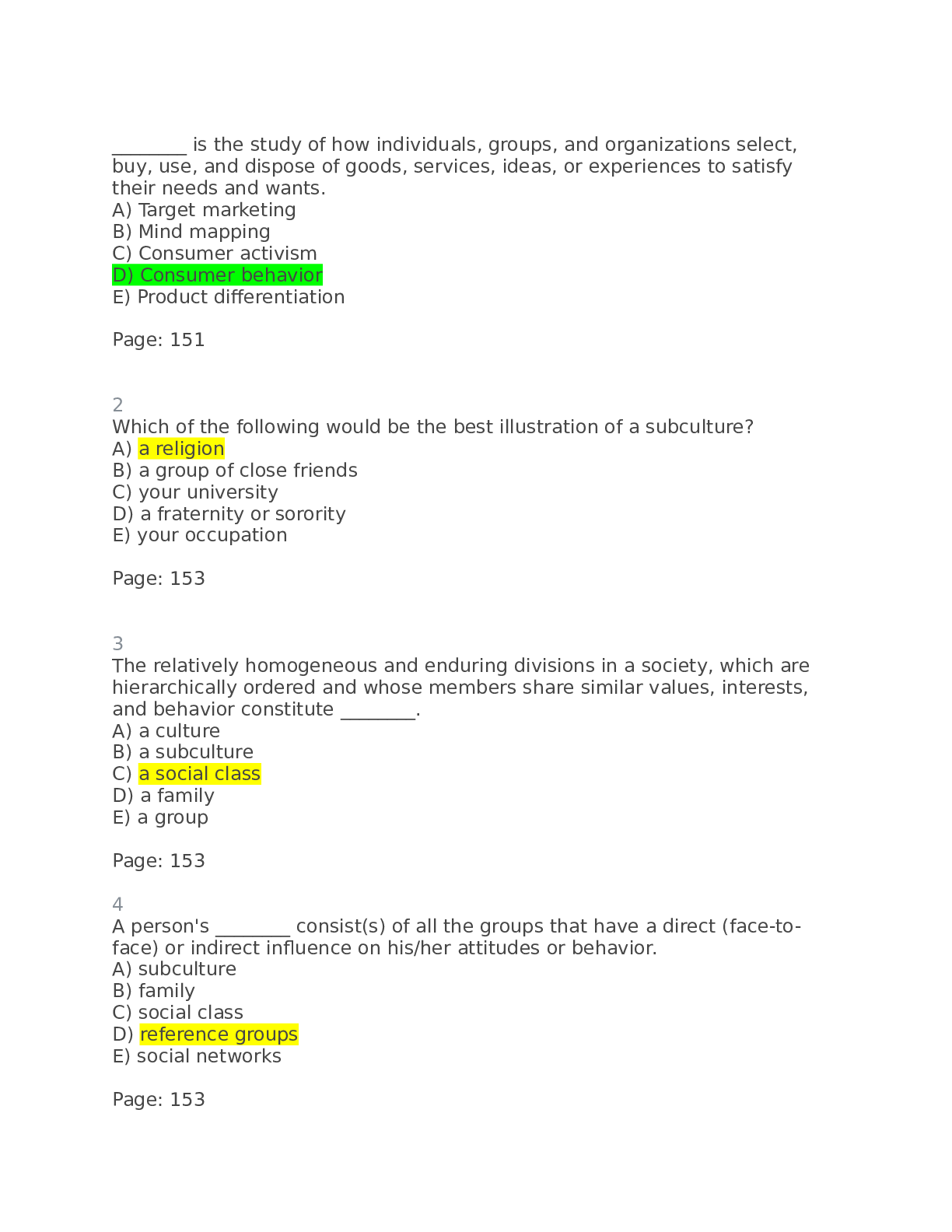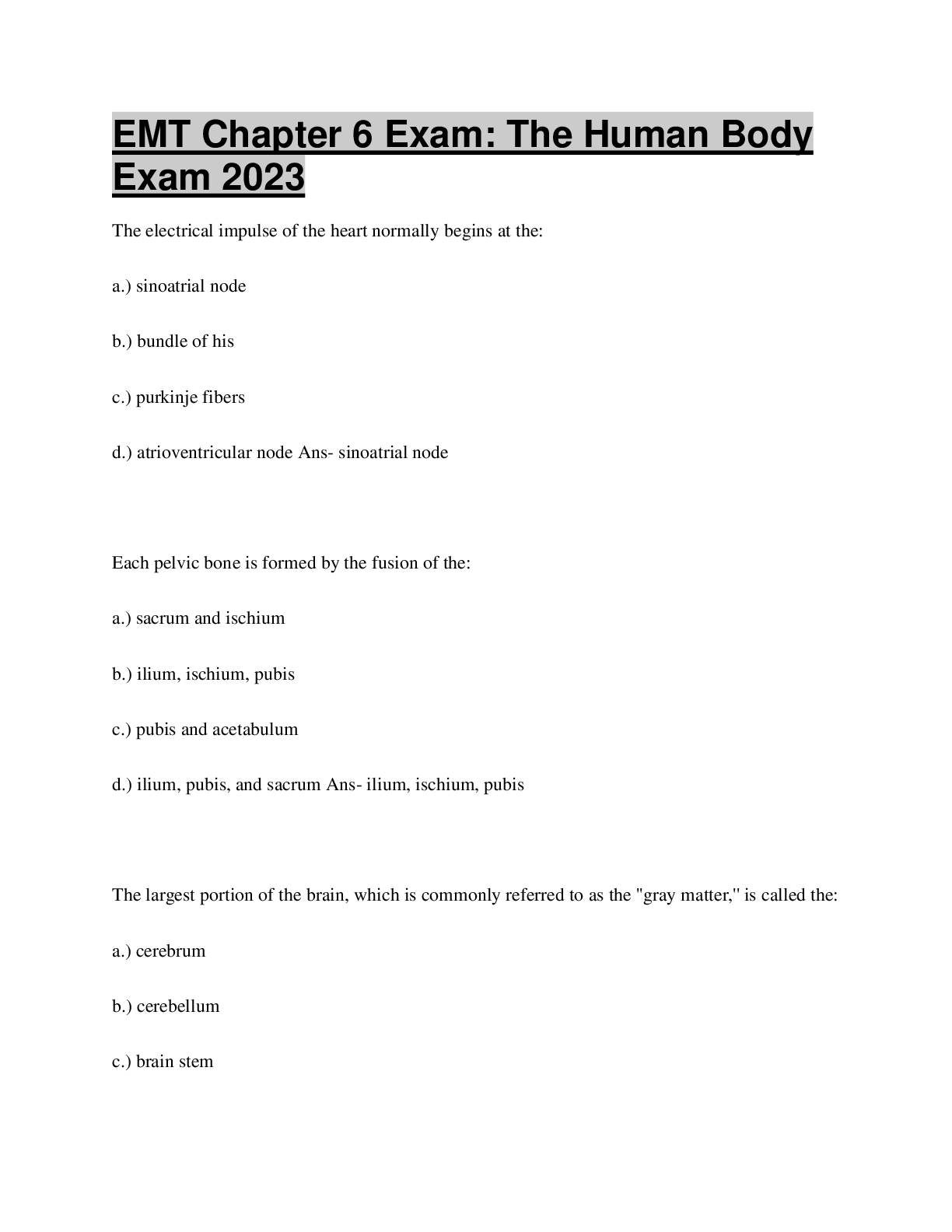FNP MSN 560 > Complete Test Bank> ANSWERS AND RATIONALES FNP MSN 560
Document Content and Description Below
ANSWERS AND RATIONALES 1. Which change represents the primary impetus for the end of the era of the female lay healer? 1. Perception of health promotion as an obligation 2. Development of a clinic... al nurse specialist position statement 3. Foundation of the American Association of Nurse-Midwives 4. Emergence of a medical establishment Page: 4 Feedback 1. This is incorrect. Lay healers traditionally viewed their role as being a function of their community obligations; however, the emerging medical establishment viewed healing as a commodity. The emergence of a male medical establishment represents the primary impetus for the end of the era of the female lay healer. 2. This is incorrect. The American Nurses Association (ANA) position statement on educational requirements for the clinical nurse specialist (CNS) was developed in 1965; the ANA’s position statement on the role of the CNS was issued in 1976. The emergence of a male medical establishment represents the primary impetus for the end of the era of the female lay healer. 3. This is incorrect. The American Association of Nurse-Midwives (AANM) was founded in 1928. The emergence of a male medical establishment represents the primary impetus for the end of the era of the female lay healer. 4. This is correct. The emergence of a male medical establishment represents the primary impetus for the end of the era of the female lay healer. Whereas lay healers viewed their role as being a function of their community obligations, the emerging medical establishment viewed healing as a commodity. The era of the female lay healer began and ended in the 19th century. The American Association of Nurse-Midwives (AANM) was founded in 1928. The American Nurses Association (ANA) position statement on educational requirements for the clinical nurse specialist (CNS) was developed in 1965; the ANA’s position statement on the role of the CNS was issued in 1976. 2. The beginning of modern nursing is traditionally considered to have begun with which event? 1. Establishment of the first school of nursing 2. Incorporation of midwifery by the lay healer 3. Establishment of the Frontier Nursing Service (FNS) 4. Creation of the American Association of Nurse-Midwives (AANM) Answer: 1 Pages: 4–5 Feedback 1. This is correct. Traditionally, modern nursing is considered to have begun in 1873, when the first three U.S. training schools for nurses opened. The role of the lay healer as a midwife is documented to have occurred in the 19th century, before the establishment of schools of nursing. The Frontier Nursing Service (FNS), which provided nurse-midwifery services, was established in 1925. In 1928, the Kentucky State Association of Midwives, which was an outgrowth of the FNS, became the American Association of Nurse-Midwives (AANM). 2. This is incorrect. The role of the lay healer as a midwife is documented to have occurred in the 19th century, before the establishment of schools of nursing. Traditionally, modern nursing is considered to have begun in 1873, when the first three U.S. training schools for nurses opened. 3. This is incorrect. The Frontier Nursing Service (FNS), which provided nursemidwifery services, was established in 1925. Traditionally, modern nursing is considered to have begun in 1873, when the first three U.S. training schools for nurses opened. 4. This is incorrect. In 1928, the Kentucky State Association of Midwives, which was an outgrowth of the FNS, became the American Association of NurseMidwives (AANM). Modern nursing is considered to have begun in 1873, at which time the first three U.S. training schools for nurses opened. 3. In 1910, which factors most significantly influenced the midwifery profession? Select all that apply. 1. Strict licensing requirements 2. Negative public perception 3. Dedicated funding for training 4. Poor maternal-child outcomes 5. Mandatory professional supervision Answer: 2, 4 Pages: 6–7 Feedback 1. This is incorrect. In 1910, the midwifery profession was significantly influenced by poor maternal-child outcomes and a public perception as unprofessional. Though legislation ultimately was passed to tighten requirements related to licensing and supervision of midwives, in the early 20th century, midwives were largely unregulated and generally perceived as unprofessional. 2. This is correct. In 1910, the midwifery profession was significantly influenced by poor maternal-child outcomes and a public perception as unprofessional. At that time, approximately 50% of all U.S. births were reportedly attended by midwives. However, especially with regard to perinatal health indicators, the national population’s general health was poor. Unfavorable outcomes among both mothers and infants were attributed to midwi [Show More]
Last updated: 1 year ago
Preview 1 out of 147 pages
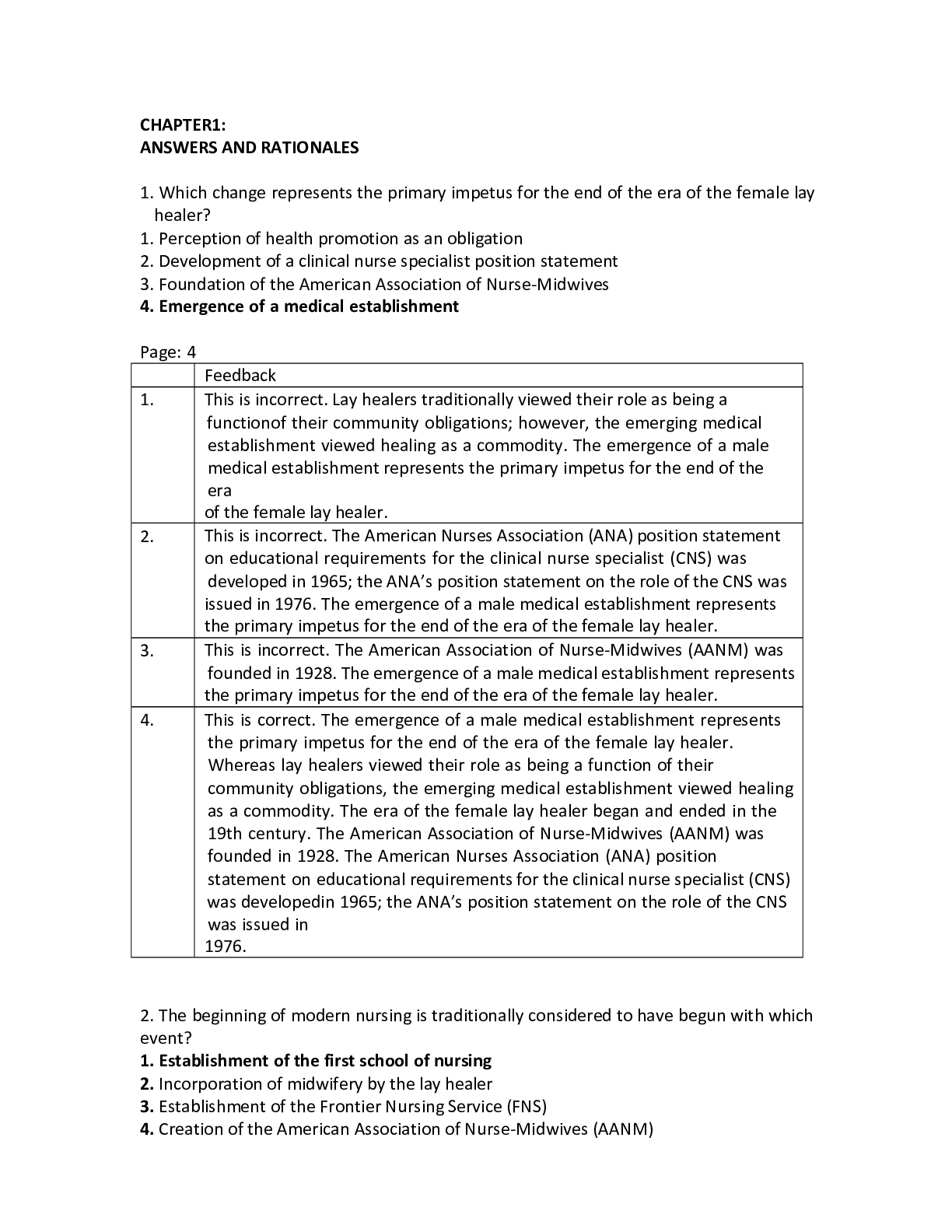
Buy this document to get the full access instantly
Instant Download Access after purchase
Add to cartInstant download
We Accept:

Reviews( 0 )
$7.00
Document information
Connected school, study & course
About the document
Uploaded On
Jan 19, 2023
Number of pages
147
Written in
Additional information
This document has been written for:
Uploaded
Jan 19, 2023
Downloads
0
Views
77


